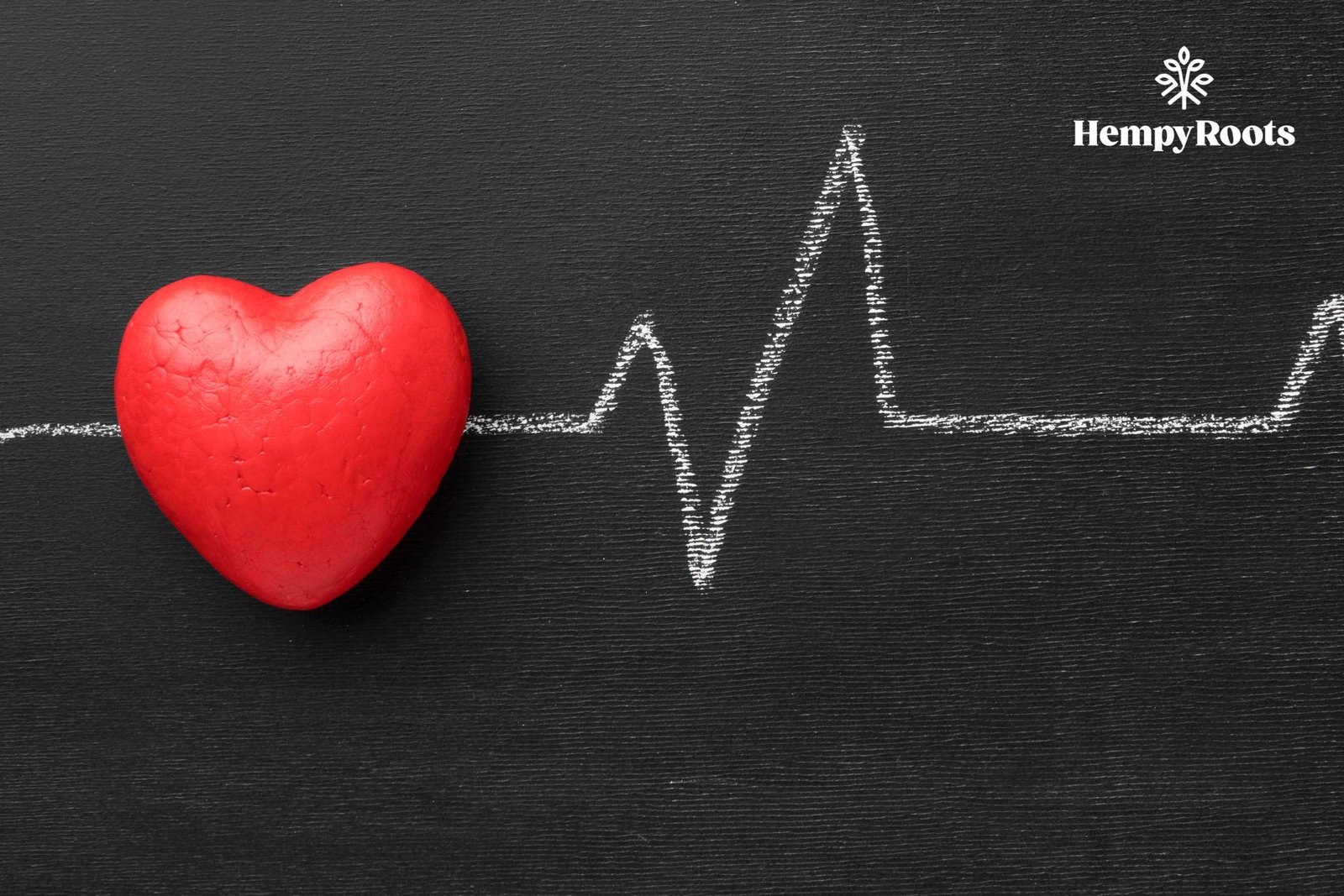Cardiovascular diseases continue to be the leading cause of death in Portugal. Many readers already know CBD for its anxiolytic and anti-inflammatory potential; some wonder if this same potential can relieve blood pressure or protect arteries from the wear and tear of time. The good news is that several clinical trials and pre-clinical studies point in that direction. The bad news is that, to date, human studies are still small-scale or short-lived. This article summarizes what we know, the doses studied, the most important drug interactions and good home monitoring practices.
Cardiovascular system in focus
At first glance, the heart and the endocannabinoid system seem worlds apart, but in reality they share several points of contact. The endothelium – the thin layer lining the inside of the arteries – releases nitrogen monoxide (NO) to keep the vessels relaxed. Persistent inflammatory processes reduce this release, stiffening the arteries and raising blood pressure. This is where CBD comes into play: by modulating CB1, CB2 receptors and TRPV channels, it can influence NO production, attenuate inflammatory cytokines such as IL-6 and TNF-α and limit the oxidative stress that weakens vascular walls. In the case of “inflammaging” – ageing accompanied by chronic low-grade inflammation – these mechanisms can make a difference.
Who can benefit
Some profiles seem obvious candidates for careful testing with CBD: people with mild to moderate hypertension who want to boost the effect of conventional drugs; patients with metabolic syndrome, where systemic inflammation aggravates cardiovascular risk; and individuals subject to stress-induced blood pressure spikes. In all these cases, it is essential to see CBD as a complement, never as a substitute for prescribed medication.
Practical dosage and forms of consumption
When starting out, the “Start Low, Go Slow” rule remains unbeatable. A starting point of 10 mg/day of broad-spectrum 5% sublingual oil allows tolerance to be observed; thereafter, add 5 mg weekly up to a usual ceiling of 40 mg/day. This gradual increase offers two advantages: it minimizes the risk of sudden hypotension and makes it easier to detect interactions with beta-blockers, anticoagulants or statins. Those who prefer capsules can opt for a formulation combining CBD and omega-3, which is easy to take in a single morning dose, although the onset of the effect is slower (around 60-90 min). To control nocturnal pressure spikes, there are softgels that combine CBD and melatonin – but avoid them if you’re taking sedatives.
Those with resting hypotension (< 90/60 mmHg) or advanced liver disease should avoid the supplement.
Home monitoring
The best way to find out if CBD is helping – and if you’re doing it safely – is to measure your blood pressure twice a day (when you wake up and in the late afternoon) for at least four weeks. An automatic sphygmomanometer and a logbook will suffice. Combining this self-monitoring with quarterly check-ups, which include an ECG and liver function tests, ensures that any abnormal variations are detected early. Symptoms such as severe dizziness, palpitations or chest pain require immediate suspension of CBD and medical evaluation.
Where research is heading
Several academic groups are planning phase III trials in resistant hypertension, comparing CBD alone and formulations with THCV or cardioactive terpenes. Other teams are exploring post-infarction use to prevent ventricular remodeling, a promising area in animal models. If these lines of research confirm clear benefits and long-term safety, it is likely that we will soon see “cardio-blend” products with standardized dosage protocols.
Conclusion: worth a try?
At the doses studied (up to 40 mg/day) CBD has a favorable safety profile and shows the ability to slightly lower blood pressure, reduce inflammatory cytokines and dampen stress responses. The evidence is not yet robust enough to replace first-line therapies, but it suggests a role as an adjunct – especially in patients looking for finer control of blood pressure spikes or a reduction in vascular inflammation. Those who opt for this route should choose products with a certificate of analysis, start slowly, monitor values at home and maintain an open dialog with their cardiologist.

